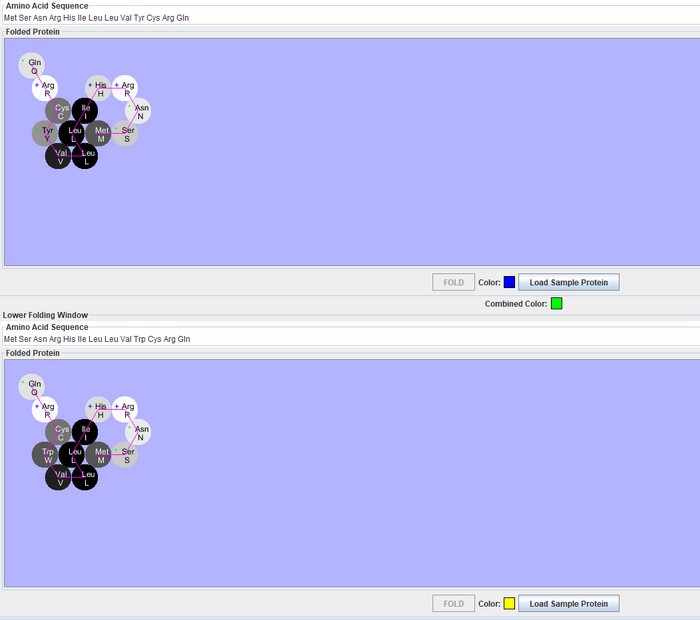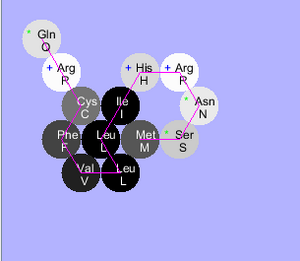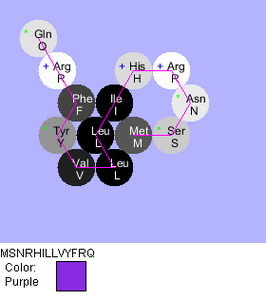Adinulos Week 2
Template
User Page
Assignments
- BIOL368/S20:Week 1
- BIOL368/S20:Week 2
- BIOL368/S20:Week 3
- BIOL368/S20:Week 4
- BIOL368/S20:Week 5
- BIOL368/S20:Week 6
- BIOL368/S20:Week 8
- BIOL368/S20:Week 9
- BIOL368/S20:Week 10
- BIOL368/S20:Week 11
- BIOL368/S20:Week 13
- BIOL368/S20:Week 14
Journal Pages
- adinulos Week 2
- adinulos Week 3
- adinulos Week 4
- adinulos Week 5
- adinulos Week 6
- adinulos Week 8
- adinulos Week 10
- adinulos Week 11
- adinulos Week 13
- adinulos Week 14
Class Journal Pages
- BIOL368/S20:Class Journal Week 1
- BIOL368/S20:Class Journal Week 2
- BIOL368/S20:Class Journal Week 3
- BIOL368/S20:Class Journal Week 4
- BIOL368/S20:Class Journal Week 5
- BIOL368/S20:Class Journal Week 6
- BIOL368/S20:Class Journal Week 10
- BIOL368/S20:Class Journal Week 11
- BIOL368/S20:Class Journal Week 13
- BIOL368/S20:Class Journal Week 14
Purpose
The purpose of the Biochemistry experiment is to figure out how structure leads to specific colors of a protein that is folded. How amino acid sequences or structures of a pigment protein impacts its' color.
Methods/Results
A
- In order to determine what proteins are found in each of the four starting organisms, we examined the alleles of the the organisms and their differences.
- Green-1: Two green alleles
- Green-2: one blue allele, one yellow allele
- Red: one red allele
- White: two white alleles
B
- To determine the amino acid sequences of the specific alleles, we looked at the specific characteristics of the amino acid sequences for each allele and compared them to each other, beginning with the starting organisms.Differences appeared in the 3rd and 4th amino acid positions from the end of the sequence.
- We manipulated the amino acids at these two specific positions, (indicated in the photo below in the yellow highlights) with different amino acids to determine if new colors would occur. Aromatic amino acids were especially instrumental in developing new colored alleles.
Table 1. This image is a table of the alleles of the organisms, with their corresponding phenotype and amino acid sequence. Highlights indicate specific requirements of the sequence to produce the specific color Photo taken from Aipotu.
C
- When manipulating the protein with different sequences, we noticed that the structure of the proteins remained similar, so in order to obtain color in these specific organisms, the protein needed to have the same structure (Figure 2).
Figure 2. Displays the general structure of the all of the proteins that present color. Image taken from Aipotu.
- We also noted that the manipulations in the amino acid sequence needed to occur in the same position (3rd and 4th from the back).
- The aromatic quality of specific amino acids is important to note. The 3 aromatic amino acids, tyrosine, tryptophan, and phenylalanine, all have aromatic rings, with alternating double and single bonds. This resonance allows electrons to move within the ring and allow some UV light to pass through, and an observable color in the protein (Biology Arizona, 2003).
D
- Through trial and error and manipulation of the sequence, we determined the rules necessary to produce a protein with specific colors.
- Green: Need tyrosine -tryptophan in the 4th and 3rd position from the end
- Yellow: Need tryptophan 4th from the end
- Blue: Need tyrosine-cystine in the 4th and 3rd position
- Orange: Need phenylalanine-tryptophan in the 3rd and 4th position from the back
- Red: Need phenylalanine-cysteine in the 4th position with no other aromatic next to it
- Purple Need tyrosine-phenylalanine in 4th and 3rd position
- Black: Need tyrosine-tryptophan-phenylalanine in the 5th-4th-3rd position
- White: Need valine-cysteine in the 4th and 3rd position
E
- The alleles we isolated make a specific protein color for an allele. These were then used to determine how to produce an overall color.
- We examined the combinations and found a few patterns. Any colored protein that was mixed with a white protein, expressed the color of the nonwhite protein. Any colored protein that was mixed with the same colored protein produced the same color.
- For example, yellow organisms have one yellow protein and one white protein, or two yellow proteins to make a yellow phenotype
- Some colors can mix to produce a color different from the starting proteins
- For example, the green-2 organism has one blue protein and one yellow protein, which makes a green phenotype. These proteins are incompletely dominant and produce an intermediate color: green (Figure 3).
- We examined the combinations and found a few patterns. Any colored protein that was mixed with a white protein, expressed the color of the nonwhite protein. Any colored protein that was mixed with the same colored protein produced the same color.

Figure 3. Displays the two proteins, blue and yellow, of organism Green-2. The overall color presented in the organism is green. Image taken from Aipotu.
F
- We were able to isolate a purple protein by manipulating the amino acid sequence in the 3rd and 4th position. Tyrosine and phenylalanine are able to absorb light between 200-280 nm and reflect purple (Figure 4).
Figure 4. Displays the structure and sequence of the purple protein. Image taken from Aipotu.
Data and Files
- Screenshot of Table 1, of the alleles, phenotype and amino acid sequences
- Figure 2: General structure of the protein
- Figure 3: Green-2 organism combined proteins
- Figure 4: Purple protein
Conclusion
In order to make specific proteins with different colors for this specific organism, the structure of the protein needed to be the same. This structure is conducive to have any color, and the placement and order of aromatic amino acids in the 3rd, 4th, and 5th positions specify the color of a specific protein. When the proteins are mixed, they can also produce intermediate colors, indicating that organisms do not need to have the same color protein as their phenotype.
Acknowledgements
- I met with my partners Drew Cartmel and Lizzy Urbina in the lab for approximately an hour and a half to generate the amino acid sequences, the chart, and screenshots of the proteins.
- My group attended office hours with Dr. Dahlquist to clarify questions we had pertaining to the procedures and results.
- I followed and modified the Biochemistry protocol from Aipotu for this experiment.
- I used the software Aipotu to generate the amino acid sequences and proteins.
- I copied and modified the procedures on the Week 2 page to generate this lab notebook entry.
- I copied and modified the protocol to edit a photo from [Media Wiki Help Page]
- Except for what is noted above, this individual journal entry was completed by me and not copied from another source.
References
Aipotu. (2017) Aipotu. Retrieved January 29, 2020 from http://aipotu.umb.edu/
Biology.Arizona. (2003). Amino Acids - Aromatic Group. Retrieved January 29, 2020 from http://www.biology.arizona.edu/biochemistry/problem_sets/aa/Aromatic.html
MediaWiki. (2020). Help:Images. Retrieved January 29, 2020, from https://www.mediawiki.org/wiki/Help:Images
OpenWetWare. (2020). BIOL368/S20:Week 2. Retrieved January 29, 2020, from https://openwetware.org/wiki/BIOL368/S20:Week_2


